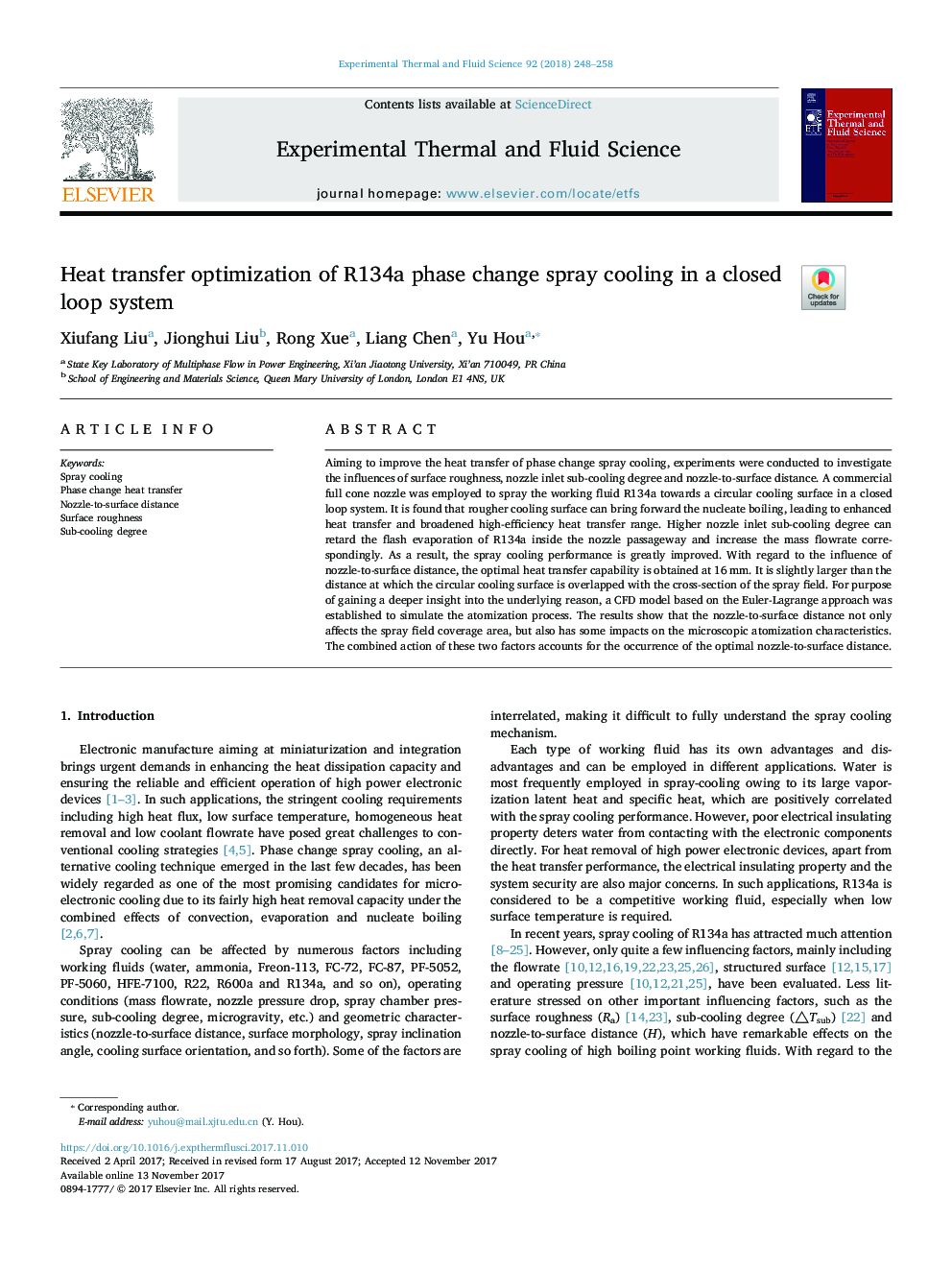| Article ID | Journal | Published Year | Pages | File Type |
|---|---|---|---|---|
| 7051836 | Experimental Thermal and Fluid Science | 2018 | 11 Pages |
Abstract
Aiming to improve the heat transfer of phase change spray cooling, experiments were conducted to investigate the influences of surface roughness, nozzle inlet sub-cooling degree and nozzle-to-surface distance. A commercial full cone nozzle was employed to spray the working fluid R134a towards a circular cooling surface in a closed loop system. It is found that rougher cooling surface can bring forward the nucleate boiling, leading to enhanced heat transfer and broadened high-efficiency heat transfer range. Higher nozzle inlet sub-cooling degree can retard the flash evaporation of R134a inside the nozzle passageway and increase the mass flowrate correspondingly. As a result, the spray cooling performance is greatly improved. With regard to the influence of nozzle-to-surface distance, the optimal heat transfer capability is obtained at 16â¯mm. It is slightly larger than the distance at which the circular cooling surface is overlapped with the cross-section of the spray field. For purpose of gaining a deeper insight into the underlying reason, a CFD model based on the Euler-Lagrange approach was established to simulate the atomization process. The results show that the nozzle-to-surface distance not only affects the spray field coverage area, but also has some impacts on the microscopic atomization characteristics. The combined action of these two factors accounts for the occurrence of the optimal nozzle-to-surface distance.
Related Topics
Physical Sciences and Engineering
Chemical Engineering
Fluid Flow and Transfer Processes
Authors
Xiufang Liu, Jionghui Liu, Rong Xue, Liang Chen, Yu Hou,
